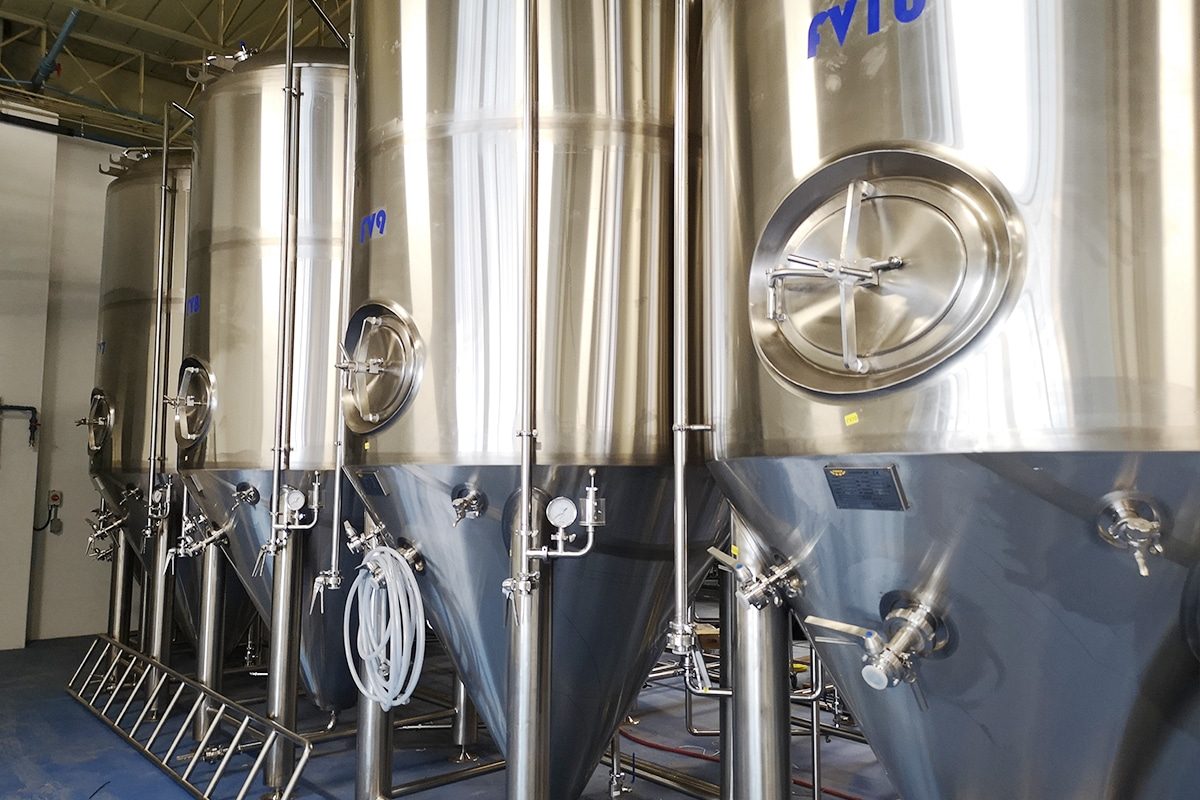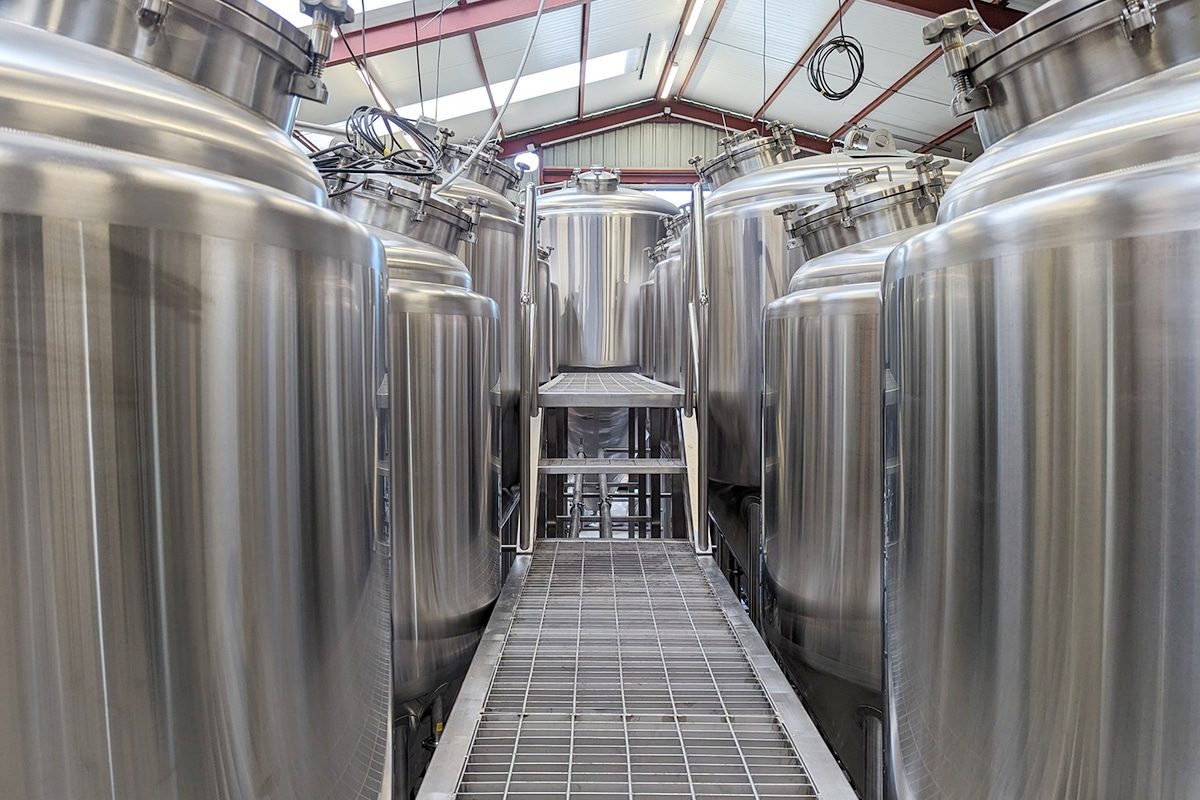
Buying High-Quality Brewing Equipment From China
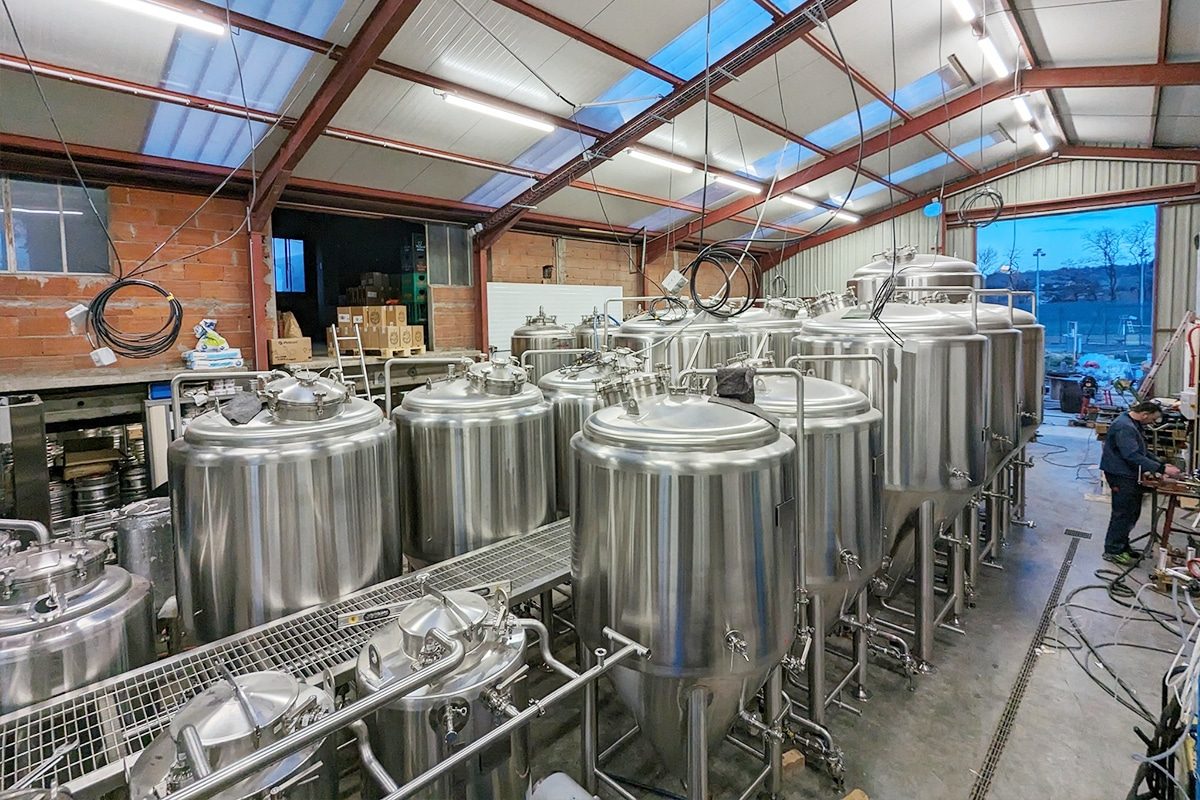
Understanding the Brewing Equipment Landscape in China
Market Segmentation
China’s brewing equipment market is multifaceted, catering to a wide range of customers, from small-scale craft brewers to large commercial breweries. This market can be segmented based on various factors, including product type, manufacturing capabilities, and target customer base.
- Product Type: Brewing equipment manufacturers in China offer a comprehensive range of products, including brewhouse equipment, fermentation tanks, bright tanks, and filling equipment such as pumps, heat exchangers, and filtration systems. These products are designed to meet diverse brewing needs and accommodate different brewing processes, from traditional to innovative techniques.
- Manufacturing Capabilities: China’s brewing equipment manufacturers vary in size and specialization, with some focusing on specific product categories or manufacturing processes. While larger factories may offer a wide range of standardized products and customization options, smaller workshops may specialize in niche products or provide bespoke solutions tailored to individual customer requirements.
- Target Customer Base: Chinese brewing equipment suppliers cater to a global customer base, serving breweries of all sizes and types worldwide. Whether it’s a small craft brewery, a medium-sized microbrewery, or a large-scale commercial brewery, Chinese manufacturers can provide equipment solutions that align with the customer’s production capacity, budget, and technical specifications.
Manufacturing Hubs
China’s brewing equipment manufacturing is concentrated in key industrial hubs across the country, where clusters of factories and workshops specialize in producing various components and assemblies for the brewing industry.
- Zhejiang Province: Zhejiang is renowned as one of China’s leading manufacturing hubs for brewing equipment, particularly stainless steel tanks and vessels. Cities such as Jinan, Ningbo, and Wenzhou are home to numerous manufacturers with expertise in stainless steel fabrication, welding, and finishing processes.
- Guangdong Province: Guangdong province, with its industrial powerhouse cities like Guangzhou and Shenzhen, hosts a significant number of brewing equipment manufacturers specializing in ancillary equipment and components such as pumps, valves, and fittings. The region’s proximity to international ports facilitates efficient logistics and export activities.
- Shandong Province: Shandong province, known for its robust manufacturing sector, is a hub for producing large-scale brewing equipment, including brewhouses, fermentation tanks, and bright tanks. Cities like Jinan and Qingdao house some of China’s largest breweries and equipment manufacturers, leveraging advanced production facilities and skilled workforce.
- Other Regions: Apart from the aforementioned provinces, brewing equipment manufacturing can also be found in other regions of China, albeit to a lesser extent. Provinces such as Jiangsu, Hebei, and Shanghai have clusters of manufacturers specializing in specific product categories or serving niche markets within the brewing industry.
Technological Advancements
China’s brewing equipment industry continues to evolve and innovate, driven by technological advancements, research and development initiatives, and investments in manufacturing capabilities. These advancements encompass various aspects of brewing equipment design, production processes, and performance enhancements.
- Advanced Materials: Chinese manufacturers are increasingly adopting advanced materials such as food-grade stainless steel, high-quality copper, and durable polymers to enhance the durability, corrosion resistance, and sanitation properties of brewing equipment. These materials undergo rigorous testing and certification to ensure compliance with industry standards and regulatory requirements.
- Precision Engineering: Technological advancements in machining, fabrication, and assembly processes have enabled Chinese manufacturers to achieve higher levels of precision and consistency in the production of brewing equipment. Computer-aided design (CAD) software, CNC machining tools, and robotic welding systems are utilized to optimize efficiency and quality throughout the manufacturing process.
- Automation and Control Systems: Automation technologies play a crucial role in modern brewing equipment, offering brewers greater control over brewing processes, efficiency gains, and product consistency. Chinese manufacturers are incorporating automation features such as programmable logic controllers (PLCs), touch-screen interfaces, and sensor-based monitoring systems into brewing equipment to streamline operations and minimize human error.
- Energy Efficiency and Sustainability: With a growing emphasis on environmental sustainability and energy efficiency, Chinese manufacturers are developing brewing equipment designs that minimize resource consumption, waste generation, and carbon emissions. This includes incorporating energy-efficient heating and cooling systems, optimizing insulation properties, and implementing water-saving technologies to reduce the environmental footprint of brewing operations.
- Digitalization and Connectivity: The advent of digitalization and the Internet of Things (IoT) technologies are revolutionizing the brewing equipment industry, enabling remote monitoring, data analytics, and predictive maintenance capabilities. Chinese manufacturers are integrating smart sensors, cloud-based software platforms, and wireless connectivity solutions into brewing equipment to empower brewers with real-time insights, operational efficiency improvements, and proactive maintenance strategies.
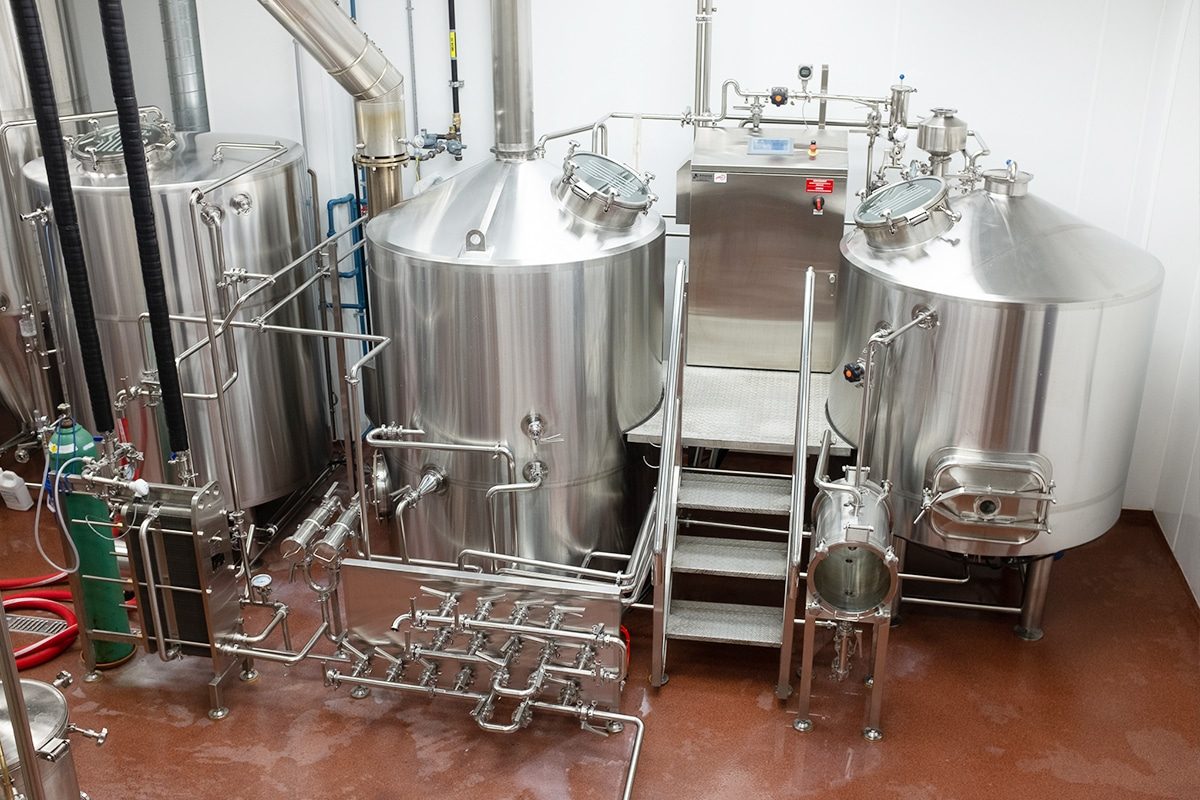
Conducting Thorough Research and Due Diligence
Online Research
Utilize online resources to gather information about potential brewing equipment suppliers in China. Online research offers access to a wealth of data, reviews, and insights that can aid in the supplier selection process.
- Business Directories: Explore online business directories such as Alibaba, Made-in-China, and Global Sources to discover a wide range of brewing equipment manufacturers and suppliers in China. These directories provide comprehensive profiles, product catalogs, and contact information for suppliers, making it easy to initiate communication and gather preliminary information.
- Company Websites and Portfolios: Visit the websites of brewing equipment manufacturers to learn more about their products, manufacturing capabilities, quality certifications, and client testimonials. Review their portfolio of past projects, case studies, and success stories to gauge their expertise and track record in the industry.
- Industry Forums and Communities: Engage with brewing industry forums, online communities, and social media groups to seek recommendations, solicit feedback, and exchange insights with fellow brewers who have experience sourcing equipment from China. Participate in discussions, ask questions, and leverage the collective wisdom of the brewing community to identify reputable suppliers and avoid common pitfalls.
- Online Reviews and Ratings: Look for reviews, ratings, and testimonials from customers who have previously purchased brewing equipment from Chinese suppliers. Platforms such as Trustpilot, Google Reviews, and industry-specific forums provide valuable feedback and firsthand experiences that can help you evaluate the reputation and reliability of potential suppliers.
Attend Trade Shows and Expos
Trade shows and exhibitions serve as valuable platforms for connecting with brewing equipment manufacturers, exploring product offerings, and establishing direct contacts with suppliers. Plan to attend major industry events to gain insights into the latest trends, innovations, and developments in the brewing equipment market.
- China Brew China Beverage (CBB) Expo: The China Brew China Beverage Expo is one of the largest and most prestigious trade shows dedicated to the brewing and beverage industry in China. Held annually in Shanghai, the CBB Expo brings together thousands of exhibitors, industry professionals, and buyers from around the world to showcase the latest products, technologies, and services in brewing equipment.
- Craft Beer China Conference & Exhibition: Craft Beer China is another prominent trade show focused on craft brewing and related industries, featuring exhibitors ranging from equipment manufacturers and suppliers to raw material providers and brewery consultants. Attend seminars, workshops, and networking events to expand your knowledge, network with industry peers, and discover potential suppliers for brewing equipment.
- Regional Trade Shows: In addition to national-level expos, consider attending regional trade shows and exhibitions hosted in key brewing hubs such as Zhejiang, Guangdong, and Shandong provinces. These events offer opportunities to connect with local manufacturers, explore regional specialties, and gain insights into specific market dynamics and trends.
Seek Recommendations
Word-of-mouth recommendations from trusted sources can be invaluable when searching for reputable brewing equipment suppliers in China. Reach out to fellow brewers, industry professionals, and brewing associations to seek recommendations and referrals based on their experiences and insights.
- Brewer Networks and Associations: Tap into existing brewer networks, associations, and online communities to seek recommendations for reliable suppliers of brewing equipment in China. Attend industry events, workshops, and seminars organized by brewing associations to network with fellow brewers, share best practices, and exchange supplier recommendations.
- Professional Consultants and Advisors: Consider seeking advice and guidance from professional consultants, advisors, or sourcing agents who specialize in assisting brewers with procurement and supply chain management. These experts can offer valuable insights, negotiate on your behalf, and facilitate connections with reputable suppliers that meet your specific requirements and preferences.
- Supplier Referrals: If you have existing relationships with suppliers or partners in the brewing industry, inquire whether they can provide referrals or recommendations for reputable brewing equipment manufacturers in China. Leverage your network of contacts and business relationships to access trusted sources and streamline the supplier selection process.
Verify Credentials
Once you’ve identified potential brewing equipment suppliers in China, it’s essential to verify their credentials, certifications, and track record to ensure reliability, quality, and compliance with industry standards. Here are key steps to verify credentials:
- Business Licenses and Registrations: Verify that the supplier is a legally registered entity in China with the appropriate business licenses, permits, and registrations required to operate as a manufacturer or exporter of brewing equipment. Check the validity and authenticity of their business registration documents through official channels such as the State Administration for Market Regulation (SAMR) website.
- Quality Certifications: Look for suppliers that hold relevant quality certifications and accreditations, such as ISO 9001 (Quality Management System), ISO 14001 (Environmental Management System), and ISO 22000 (Food Safety Management System). These certifications demonstrate the supplier’s commitment to quality, consistency, and continuous improvement in their manufacturing processes and operations.
- Compliance with Regulatory Standards: Ensure that the brewing equipment complies with relevant regulatory standards and requirements, both in China and your target market. Verify that the equipment meets safety, sanitation, and quality standards prescribed by regulatory authorities such as the China Compulsory Certification (CCC), European Union (EU) directives, and U.S. Food and Drug Administration (FDA) regulations.
- Customer References and Testimonials: Request customer references or testimonials from the supplier to validate their track record and customer satisfaction levels. Reach out to past clients or industry contacts provided by the supplier to inquire about their experiences, product quality, service reliability, and overall satisfaction with the supplier’s performance.
- Visit Manufacturing Facilities: If feasible, consider visiting the supplier’s manufacturing facilities in China to assess their production capabilities, quality control processes, and infrastructure firsthand. Conduct site visits, factory tours, and meetings with key personnel to evaluate the supplier’s professionalism, transparency, and commitment to excellence.
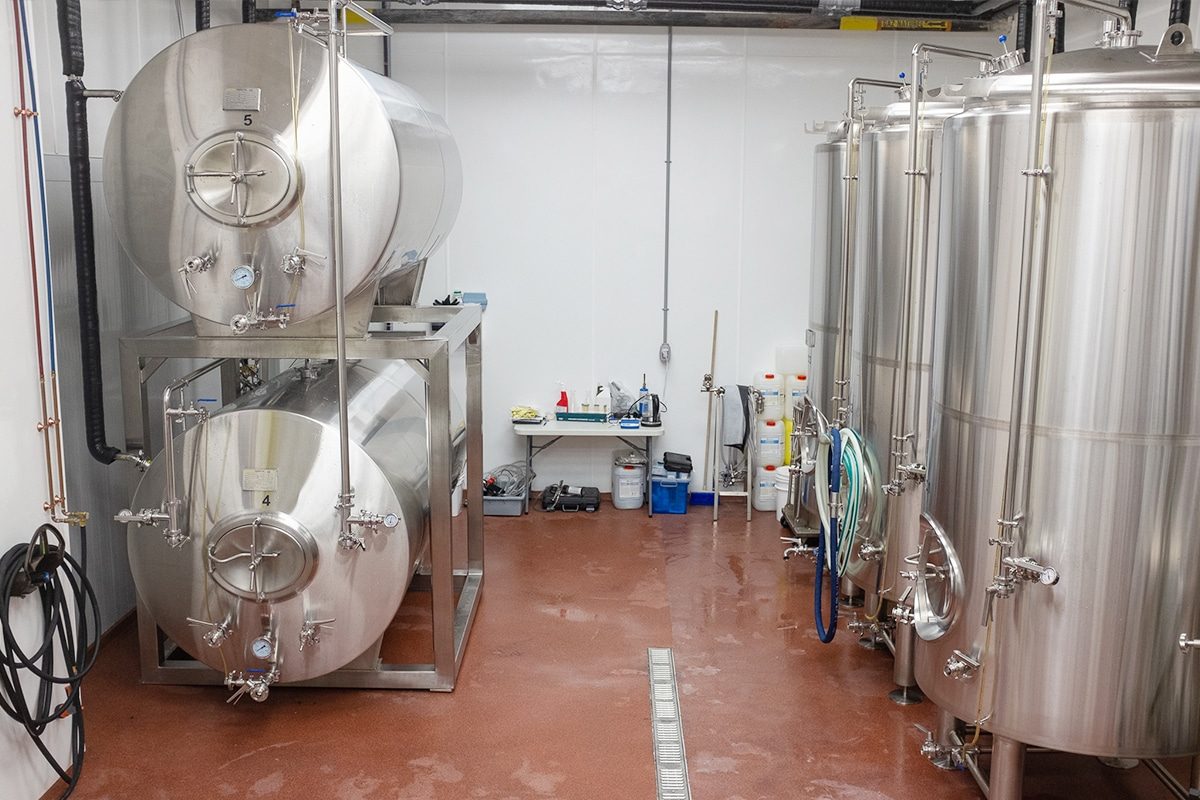
Defining Your Brewing Equipment Requirements
Brewing Capacity
The brewing capacity refers to the volume of beer that a brewery can produce within a specified time frame, typically measured in barrels, liters, or hectoliters. Brewers need to assess their brewing capacity requirements based on factors such as market demand, production goals, and facility constraints.
- Production Volume: Determine the desired batch size and overall production volume based on your brewery’s output targets and sales projections. Consider factors such as anticipated growth, seasonal fluctuations, and market trends when estimating your brewing capacity requirements.
- Scalability: Evaluate the scalability of the brewing equipment to accommodate future growth and expansion plans. Choose equipment that offers flexibility and scalability options, such as modular designs, additional fermentation vessels, or upgradeable components, to adapt to changing production demands over time.
- Efficiency and Utilization: Optimize the utilization of brewing equipment to maximize efficiency and minimize downtime. Balance the capacity of individual equipment components, such as brewhouse vessels, fermentation tanks, and packaging lines, to ensure smooth operations and efficient use of resources throughout the brewing process.
Equipment Type and Configuration
Brewing equipment encompasses a wide range of components, systems, and machinery tailored to specific brewing processes and production requirements. Brewers must carefully evaluate the type and configuration of equipment needed to support their brewing operations effectively.
- Brewhouse Configuration: Consider the layout and configuration of the brewhouse, including mash tuns, lauter tuns, brew kettles, and whirlpool vessels, based on your preferred brewing methods (e.g., infusion, decoction, or combination) and recipe formulations. Choose equipment that facilitates precise temperature control, efficient wort extraction, and thorough lautering to achieve desired brewing outcomes.
- Fermentation and Conditioning: Select fermentation vessels, bright tanks, and conditioning equipment that accommodate your desired fermentation capacity, yeast management practices, and conditioning requirements. Evaluate options such as cylindroconical fermentation tanks, unitanks, horizontal lagering tanks, and brite beer tanks based on your fermentation processes and product specifications.
- Packaging Solutions: Determine the packaging formats and equipment needed to package your finished beer, including kegs, bottles, cans, or draught systems. Assess packaging line configurations, filling technologies, labeling options, and packaging materials to optimize efficiency, minimize product loss, and maintain product quality during packaging operations.
Customization Options
Customization plays a crucial role in tailoring brewing equipment to meet specific brewery requirements, preferences, and branding objectives. Brewers should explore customization options offered by suppliers to create equipment solutions that align with their unique needs and enhance their brewing capabilities.
- Tank Sizes and Configurations: Customize tank sizes, configurations, and specifications to match your brewery’s space constraints, production volumes, and process requirements. Choose from standard tank sizes or request custom tank dimensions, geometry, and accessories to optimize floor space utilization and workflow efficiency.
- Design Features and Functionalities: Specify design features and functionalities that enhance equipment performance, user experience, and product quality. Request customization options such as insulation thickness, heating/cooling methods, pressure ratings, racking arm configurations, and sanitation enhancements to meet your operational preferences and brewing standards.
- Branding and Aesthetics: Personalize brewing equipment with branding elements, logos, and color schemes that reflect your brewery’s identity, values, and branding strategy. Work with suppliers to incorporate custom signage, graphics, and finishes that reinforce your brand image and create a cohesive visual identity across your brewing equipment lineup.
Regulatory Compliance
Compliance with regulatory standards and industry regulations is paramount when sourcing brewing equipment to ensure product safety, quality, and legal compliance. Brewers must verify that the selected equipment meets applicable regulatory requirements in their target market and adheres to industry best practices.
- Food Safety and Hygiene: Ensure that brewing equipment complies with food safety regulations and sanitation standards to prevent contamination, microbial growth, and foodborne hazards. Verify that equipment materials, surface finishes, and construction methods meet food-grade specifications and are suitable for contact with beer and brewing ingredients.
- Pressure Vessel Regulations: Check compliance with pressure vessel regulations and codes governing the design, fabrication, and inspection of pressurized equipment such as boilers, fermenters, and bright tanks. Verify that pressure vessels are built to ASME (American Society of Mechanical Engineers) standards, PED (Pressure Equipment Directive) requirements, or equivalent regulatory frameworks to ensure safe operation and regulatory compliance.
- Electrical Safety Standards: Confirm compliance with electrical safety standards and regulations for brewing equipment incorporating electrical components, control systems, and automation features. Ensure that electrical equipment meets relevant certification requirements, wiring codes, and electrical safety guidelines to prevent electrical hazards and ensure user safety.
- Environmental Regulations: Consider environmental regulations and sustainability initiatives that impact brewing equipment design, materials selection, and manufacturing processes. Verify compliance with environmental standards such as RoHS (Restriction of Hazardous Substances), WEEE (Waste Electrical and Electronic Equipment), and environmental management systems (e.g., ISO 14001) to minimize environmental impact and promote sustainability throughout the equipment lifecycle.
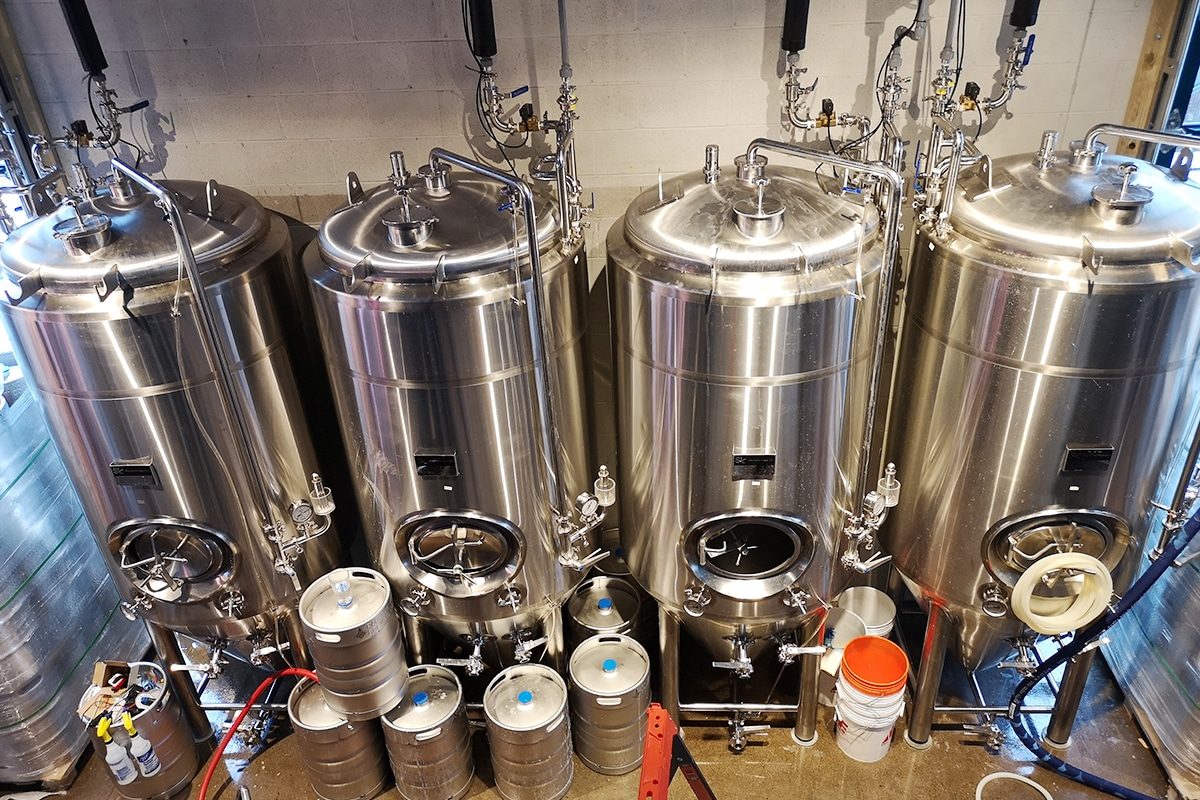
Establishing Communication Channels with Suppliers
Direct Communication
Foster direct communication channels with brewing equipment suppliers in China to facilitate clear and open dialogue. Direct communication enables both parties to exchange information, address concerns, and negotiate terms directly, bypassing intermediaries or third-party agents.
- Contact Information: Obtain direct contact information for key personnel at the supplier’s organization, including sales representatives, project managers, and technical experts. Establish communication channels via email, phone, messaging apps, or video conferencing platforms to facilitate timely and direct communication.
- Single Point of Contact: Designate a single point of contact within your organization to liaise with the supplier and coordinate communication efforts. Having a dedicated contact person streamlines communication, minimizes confusion, and ensures consistency in messaging and interactions.
Language and Cultural Considerations
Recognize language and cultural differences when communicating with Chinese suppliers to enhance rapport, avoid misunderstandings, and build trust. Addressing these considerations demonstrates respect for cultural norms and fosters effective cross-cultural communication.
- Language Proficiency: Assess the language proficiency of both parties and determine the most suitable language for communication. Consider hiring translators or interpreters fluent in Mandarin Chinese and English to facilitate communication and bridge language barriers effectively.
- Cultural Sensitivity: Be mindful of cultural nuances, customs, and communication styles prevalent in China when interacting with suppliers. Show respect for hierarchical structures, adhere to formalities, and demonstrate patience and flexibility in negotiations and discussions.
- Time Zone Differences: Take into account time zone differences between your location and China when scheduling meetings, calls, or communication activities. Coordinate communication timings to accommodate both parties’ schedules and minimize disruptions due to time zone disparities.
Clarifying Expectations
Clearly articulate your expectations, requirements, and specifications to the supplier to ensure alignment and avoid misunderstandings or discrepancies. Provide detailed information and documentation to guide the supplier in meeting your specific needs and quality standards.
- Detailed Specifications: Prepare comprehensive specifications, drawings, and technical documentation outlining the desired features, dimensions, materials, and performance criteria for the brewing equipment. Clearly define requirements for product customization, branding, and packaging to convey your expectations accurately.
- Quality Standards: Communicate your quality standards, acceptance criteria, and regulatory requirements to the supplier to ensure compliance and adherence to industry best practices. Emphasize the importance of product quality, reliability, and safety in meeting your brewery’s standards and customer expectations.
- Delivery Schedule: Communicate your desired delivery schedule, lead times, and milestone deadlines to the supplier to facilitate production planning and logistics coordination. Establish realistic timelines and expectations based on production capacity, shipping logistics, and any potential delays or contingencies.
Responsive and Proactive Communication
Maintain responsive and proactive communication with the supplier throughout the procurement process to address issues promptly, monitor progress, and drive collaboration toward successful outcomes. Prompt communication fosters trust, accountability, and problem-solving capabilities between both parties.
- Timely Responses: Respond promptly to inquiries, requests for information, and communication from the supplier to demonstrate responsiveness and commitment to the partnership. Avoid delays in providing feedback, approvals, or clarification to prevent bottlenecks and keep the project on track.
- Proactive Updates: Proactively communicate updates, developments, and changes to the supplier, including revisions to specifications, production schedules, or project requirements. Keep the supplier informed of any relevant developments or challenges on your end that may impact the procurement process.
- Issue Resolution: Address issues, concerns, or discrepancies in a timely and constructive manner to facilitate resolution and prevent escalation. Collaborate with the supplier to identify root causes, propose solutions, and implement corrective actions to mitigate risks and ensure project success.
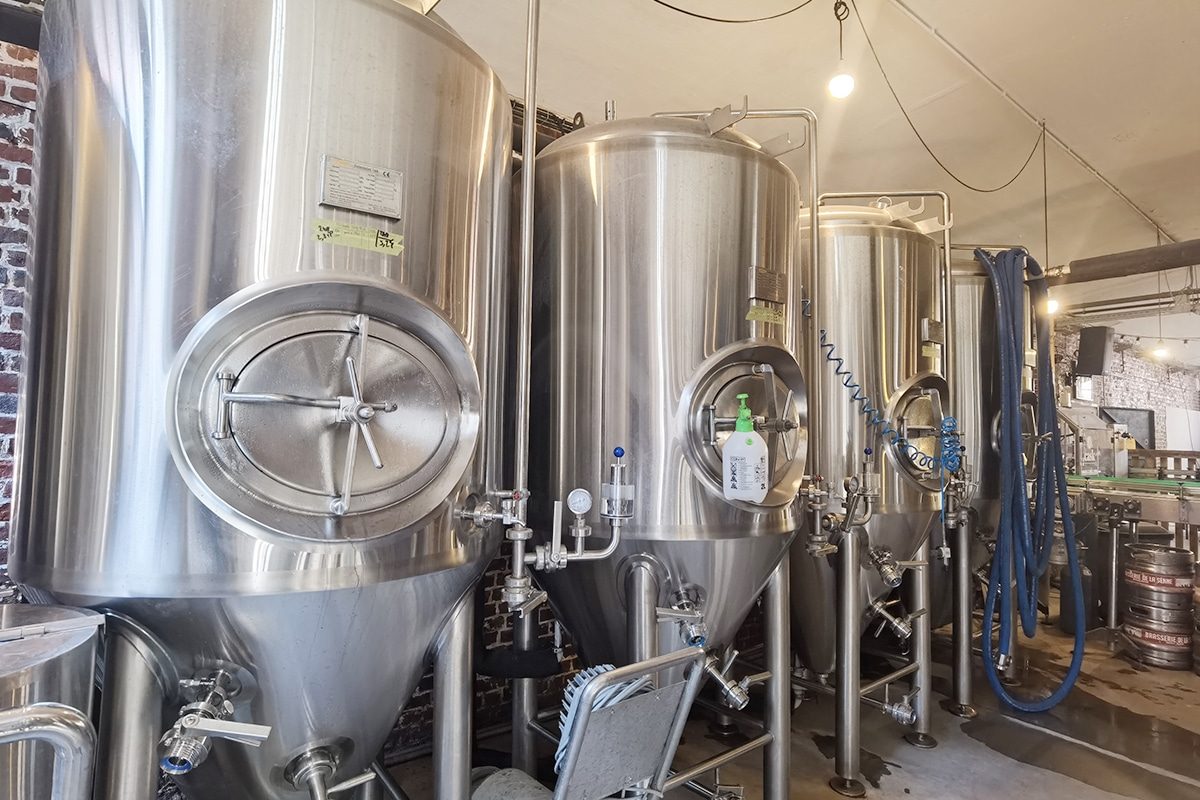
Requesting and Evaluating Product Samples
Inspect Quality and Workmanship
When requesting product samples from Chinese suppliers, prioritize inspecting the quality and workmanship of the equipment to assess its durability, craftsmanship, and attention to detail. Pay close attention to the following aspects:
- Material Quality: Examine the materials used in the construction of the brewing equipment, including stainless steel components, welds, seals, and fittings. Verify that the materials meet food-grade standards, exhibit corrosion resistance, and demonstrate robustness suitable for brewing operations.
- Surface Finish: Evaluate the surface finish of the equipment for smoothness, cleanliness, and uniformity. Look for signs of scratches, dents, imperfections, or discoloration that may affect product aesthetics, sanitation, or functionality.
- Welding Quality: Inspect the welding seams and joints for consistency, penetration, and strength. Ensure that welds are clean, smooth, and free from defects such as porosity, undercutting, or incomplete fusion that could compromise structural integrity or sanitation.
- Component Alignment: Check the alignment and assembly of components such as valves, fittings, gaskets, and sight glasses to ensure proper fit, functionality, and ease of operation. Verify that all components are securely fastened and properly aligned to prevent leaks or malfunctions.
- Attention to Detail: Assess the overall attention to detail and craftsmanship exhibited in the construction of the equipment. Look for indicators of precision machining, meticulous assembly, and quality control measures that reflect a commitment to excellence in manufacturing.
Testing Performance
In addition to inspecting quality and workmanship, conduct thorough performance testing of the product samples to evaluate their functionality, reliability, and suitability for brewing operations. Consider the following performance criteria:
- Operational Efficiency: Test the equipment’s operational efficiency, ease of use, and ergonomic design to assess its suitability for your brewing processes and workflow requirements. Evaluate features such as access points, controls, drainage systems, and cleaning procedures for practicality and user-friendliness.
- Temperature Control: Assess the equipment’s temperature control capabilities, heating/cooling efficiency, and thermal stability to ensure precise control over brewing parameters such as mash temperature, fermentation temperature, and wort chilling. Conduct temperature ramp-up tests, heat retention tests, and cooling performance tests to validate performance under various operating conditions.
- Pressure Handling: Verify the equipment’s pressure handling capabilities, sealing integrity, and pressure relief mechanisms to ensure safety and compliance with regulatory standards. Conduct pressure tests, leak tests, and stress tests to assess the equipment’s ability to withstand internal pressures and external forces without failure or deformation.
- Sanitation and Cleanability: Evaluate the equipment’s sanitation features, surface finishes, and clean-in-place (CIP) compatibility to facilitate effective cleaning and sanitation practices. Assess accessibility for cleaning, smoothness of surfaces, and resistance to microbial adhesion to minimize the risk of contamination and ensure product quality and safety.
- Product Consistency: Test the equipment’s ability to maintain product consistency, uniformity, and quality across multiple batches. Monitor key brewing parameters such as gravity, pH, color, and flavor profiles to assess the equipment’s impact on product characteristics and ensure consistency in brewing outcomes.
Seeking Feedback
After evaluating product samples, seek feedback from suppliers, industry peers, and potential end-users to gather insights, validate findings, and make informed decisions. Solicit feedback on the following aspects:
- Supplier Input: Discuss your observations, concerns, and feedback with the supplier to address any issues, clarify specifications, and explore potential solutions or improvements. Seek the supplier’s input on product performance, customization options, and value-added features that could enhance your brewing operations.
- Peer Review: Share product samples and testing results with fellow brewers, industry experts, or brewing associations to solicit impartial feedback and validation. Collaborate with peers to exchange insights, compare experiences, and gather recommendations for reputable suppliers and preferred equipment options.
- Customer References: Request references from the supplier to connect with past customers or users who have experience with the equipment. Engage with references to inquire about their satisfaction levels, usage scenarios, and any challenges or benefits associated with the equipment in real-world brewing environments.
- Trial Periods and Pilots: Consider negotiating trial periods or pilot programs with the supplier to test the equipment on-site in your brewery before making a final purchasing decision. Use trial periods to validate performance, assess compatibility with existing systems, and gather feedback from your brewing team on usability and functionality.
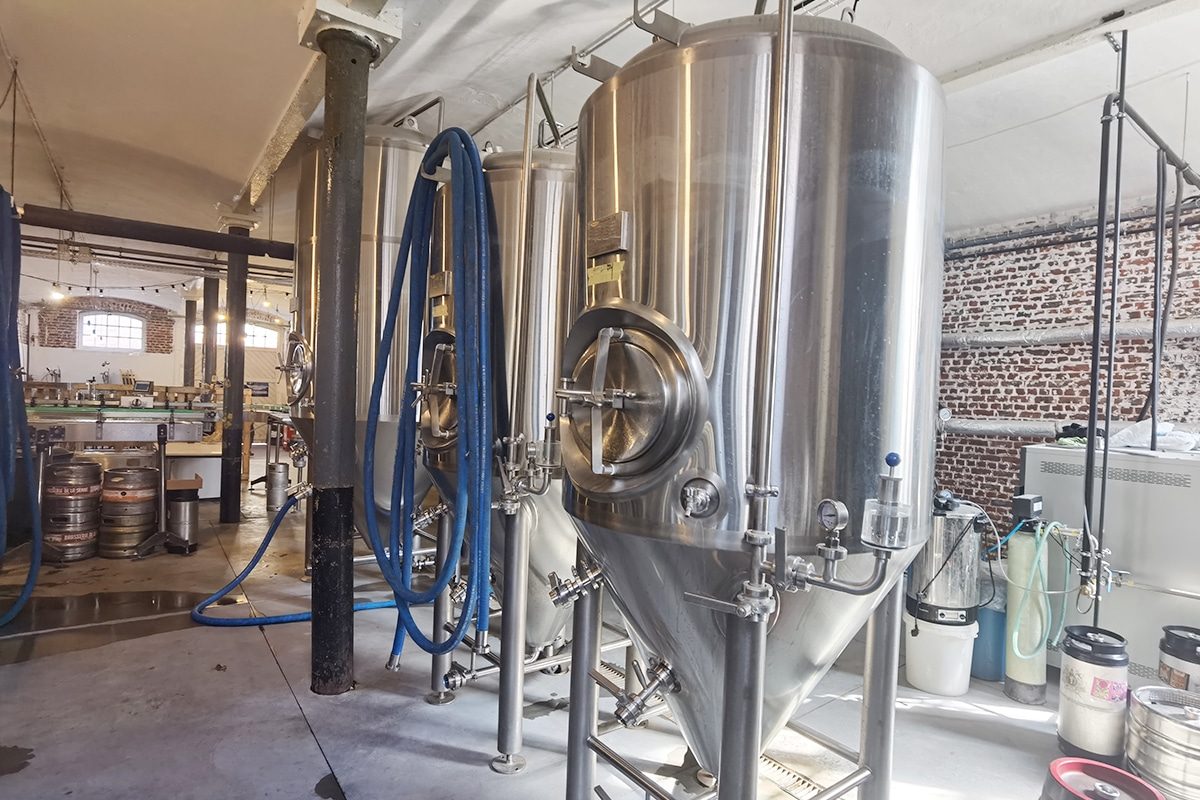
Negotiating Pricing and Payment Terms
Competitive Pricing
Conduct a thorough analysis of competitive pricing in the brewing equipment market to benchmark prices, identify pricing trends, and assess the competitiveness of offers from Chinese suppliers. Gather pricing data from multiple sources, including competitors, industry reports, and online marketplaces, to establish a baseline for comparison.
- Price Transparency: Request detailed pricing breakdowns from Chinese suppliers, including costs for equipment components, customization options, shipping, taxes, and any additional fees or charges. Evaluate pricing transparency, clarity, and completeness to ensure no hidden costs or surprises in the final pricing agreement.
- Negotiation Leverage: Use competitive pricing analysis to negotiate with suppliers and leverage pricing discrepancies or competitive advantages to secure favorable terms. Highlight areas where suppliers can offer value-added services, cost savings, or competitive pricing to strengthen your negotiating position and drive concessions.
Value-Based Pricing
Focus on value-based pricing negotiations to align pricing with the perceived value, benefits, and quality of the brewing equipment offered by Chinese suppliers. Emphasize the unique features, performance advantages, and customization options that differentiate the supplier’s products and justify premium pricing.
- Total Cost of Ownership: Consider the total cost of ownership (TCO) of brewing equipment beyond the initial purchase price, including maintenance, spare parts, energy consumption, and lifecycle costs. Highlight the long-term value proposition, durability, and reliability of the equipment to justify higher upfront costs based on lower TCO over time.
- Value-Added Services: Negotiate for value-added services or benefits from suppliers, such as technical support, training, warranty coverage, and after-sales service, to enhance the overall value proposition and justify pricing premiums. Seek assurances of ongoing support and assistance to address any issues or challenges that may arise during equipment usage.
Flexible Payment Terms
Negotiate flexible payment terms with Chinese suppliers to manage cash flow, minimize financial risks, and accommodate budget constraints. Seek options for installment payments, milestone-based payments, or deferred payment schedules that align with project milestones, equipment delivery timelines, and financing capabilities.
- Installment Payments: Negotiate for installment payments spread over multiple stages of the procurement process, such as deposit, production milestone, and final payment upon equipment acceptance or delivery. Break down payments into manageable amounts to ease financial burden and mitigate risk exposure.
- Milestone-Based Payments: Structure payments based on predefined project milestones, such as equipment design approval, production commencement, factory acceptance testing (FAT), and onsite installation and commissioning. Align payment milestones with project progress and deliverables to incentivize timely completion and ensure accountability.
- Deferred Payment Options: Explore options for deferred payment terms, grace periods, or payment deferrals that provide flexibility in managing cash flow and budgetary constraints. Negotiate favorable terms for payment terms extension, interest-free periods, or payment holidays to ease financial strain and facilitate investment in brewing equipment.
Bulk Purchase Discounts
Capitalize on bulk purchase discounts and volume incentives offered by Chinese suppliers to maximize cost savings and optimize economies of scale. Negotiate discounts based on the quantity of equipment ordered, bundled packages, or long-term commitments to secure preferential pricing and enhance purchasing power.
- Volume Discounts: Negotiate tiered pricing structures or volume discounts based on the quantity of brewing equipment purchased, with higher discounts applied to larger orders or bulk purchases. Leverage economies of scale to drive down unit costs and achieve significant savings on equipment procurement.
- Bundled Packages: Inquire about bundled packages or package deals that combine multiple equipment components, accessories, or services into a single offering at a discounted price. Explore opportunities to customize bundled packages to meet specific brewing requirements and maximize value for your investment.
Payment Security
Prioritize payment security and risk mitigation measures when negotiating payment terms with Chinese suppliers to safeguard against fraud, payment disputes, and financial losses. Implement safeguards, mechanisms, and contractual protections to ensure payment security throughout the procurement process.
- Escrow Services: Consider using escrow services or third-party payment platforms to facilitate secure transactions and protect funds until equipment delivery and acceptance. Escrow services provide a neutral intermediary to hold funds in trust and release payments to the supplier upon fulfillment of contractual obligations and satisfactory performance.
- Payment Guarantees: Request payment guarantees, performance bonds, or letters of credit from suppliers to provide assurances of payment security and financial stability. Negotiate terms for payment guarantees or financial instruments that protect against non-performance, delivery delays, or quality issues.
- Contractual Protections: Include payment terms, conditions, and dispute resolution mechanisms in written contracts or purchase agreements with Chinese suppliers to clarify payment obligations, delivery schedules, and recourse options in case of disputes or breaches. Seek legal advice and assistance in drafting contracts to ensure compliance with applicable laws and regulations.
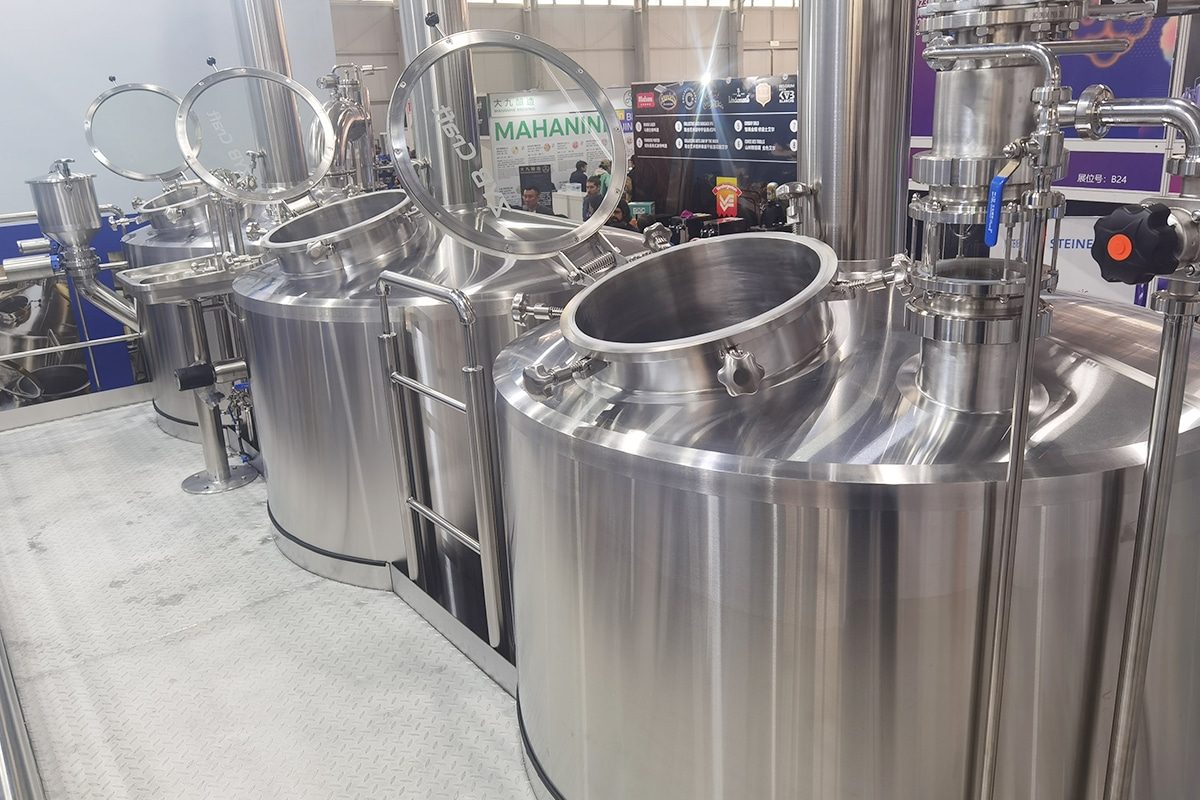
Ensuring Quality Assurance and Compliance
Quality Control Processes
Partner with Chinese suppliers that prioritize rigorous quality control processes and adhere to internationally recognized quality management standards. Request detailed information about the supplier’s quality control procedures, inspection protocols, and quality assurance measures to ensure consistency and reliability in manufacturing.
- In-House Quality Inspections: Verify that the supplier conducts comprehensive in-house quality inspections at various stages of the production process, including raw material procurement, component fabrication, assembly, and final product testing. Emphasize the importance of defect detection, dimensional accuracy, and product conformity to specifications.
- Quality Assurance Standards: Confirm that the supplier implements quality assurance standards such as ISO 9001 (Quality Management System) to establish and maintain robust quality management systems. Ensure that quality control processes are documented, standardized, and continuously monitored to identify and address deviations or non-conformities.
- Supplier Audits and Assessments: Consider conducting supplier audits or assessments to evaluate the supplier’s manufacturing facilities, quality control capabilities, and adherence to best practices. Assess factors such as production capacity, equipment calibration, staff training, and corrective action processes to validate the supplier’s commitment to quality assurance.
Material Specifications
Specify material requirements and quality standards for brewing equipment components to ensure durability, corrosion resistance, and food safety compliance. Collaborate with suppliers to select materials that meet industry specifications, regulatory requirements, and customer preferences.
- Food-Grade Materials: Specify food-grade materials such as stainless steel (e.g., AISI 304 or AISI 316), sanitary gaskets, seals, and coatings that are suitable for contact with brewing ingredients and comply with international food safety regulations. Verify material certifications, chemical compositions, and material traceability to ensure compliance with industry standards.
- Surface Finishes: Define surface finish requirements for brewing equipment components, including internal and external surfaces, welds, and polished finishes. Specify surface roughness, passivation treatments, and sanitation-friendly designs to facilitate cleaning, minimize bacterial adhesion, and maintain product hygiene.
- Component Compatibility: Ensure compatibility between materials and brewing processes to prevent corrosion, contamination, or flavor taints. Consider factors such as chemical resistance, temperature tolerance, and compatibility with cleaning agents, sanitizers, and brewing ingredients when selecting materials for critical components such as fermentation tanks, heat exchangers, and piping systems.
Compliance Certifications
Verify compliance certifications and regulatory approvals for brewing equipment to demonstrate adherence to industry standards, safety regulations, and quality assurance requirements. Require suppliers to provide documentation and evidence of compliance with relevant certification programs and regulatory authorities.
- CE Marking: Verify that brewing equipment meets the requirements of the European Union’s CE (Conformité Européenne) marking directive, which indicates compliance with health, safety, and environmental protection standards for products sold within the European Economic Area (EEA). Ensure that equipment bearing the CE mark undergoes conformity assessment procedures and meets applicable harmonized standards.
- ASME Certification: If applicable, ensure that pressure vessels and boilers in brewing equipment are ASME (American Society of Mechanical Engineers) certified to demonstrate compliance with pressure vessel codes and safety standards. Verify that ASME-stamped equipment undergoes design, fabrication, inspection, and testing procedures according to ASME Boiler and Pressure Vessel Code requirements.
- Other Regulatory Approvals: Depending on the destination market and specific requirements, seek compliance with additional regulatory approvals such as FDA (U.S. Food and Drug Administration) regulations, TÜV (Technischer Überwachungsverein) certifications, PED (Pressure Equipment Directive) compliance, or local health and safety regulations.
Performance Testing
Conduct thorough performance testing and validation of brewing equipment to assess functionality, reliability, and compliance with technical specifications. Collaborate with suppliers to define testing protocols, acceptance criteria, and performance benchmarks to ensure equipment meets operational requirements.
- Factory Acceptance Testing (FAT): Request factory acceptance testing (FAT) procedures to verify equipment performance and functionality before shipment. Participate in FAT sessions to witness equipment operation, conduct performance tests, and validate compliance with specified requirements.
- On-Site Acceptance Testing: Upon equipment delivery and installation, perform on-site acceptance testing to confirm proper functionality, integration, and alignment with brewery operations. Conduct tests such as pressure tests, leak tests, temperature profiling, and operational trials to validate equipment performance under real-world conditions.
- Performance Guarantees: Negotiate performance guarantees or warranties with suppliers to provide assurances of equipment performance, reliability, and durability. Specify performance parameters, uptime guarantees, and service level agreements to hold suppliers accountable for delivering quality equipment and supporting ongoing maintenance and service needs.
Documentation and Traceability
Maintain comprehensive documentation and traceability records throughout the equipment procurement process to ensure transparency, accountability, and regulatory compliance. Require suppliers to provide documentation, certifications, and traceability records for materials, components, manufacturing processes, and quality control activities.
- Material Certificates: Obtain material certificates, test reports, and certificates of conformity for brewing equipment materials, components, and sub-assemblies. Verify material specifications, chemical compositions, mechanical properties, and compliance with relevant standards and regulations.
- Compliance Documentation: Collect and retain compliance documentation, certificates, and regulatory approvals for brewing equipment, including CE certificates, ASME stamps, PED declarations of conformity, and other applicable certifications. Maintain records of regulatory compliance and product conformity for audit and verification purposes.
- Product Manuals and Instructions: Request product manuals, operation guides, maintenance instructions, and troubleshooting resources from suppliers to assist with equipment installation, operation, and maintenance. Ensure that documentation is clear, comprehensive, and accessible to support the safe and effective use of the equipment by brewery personnel.
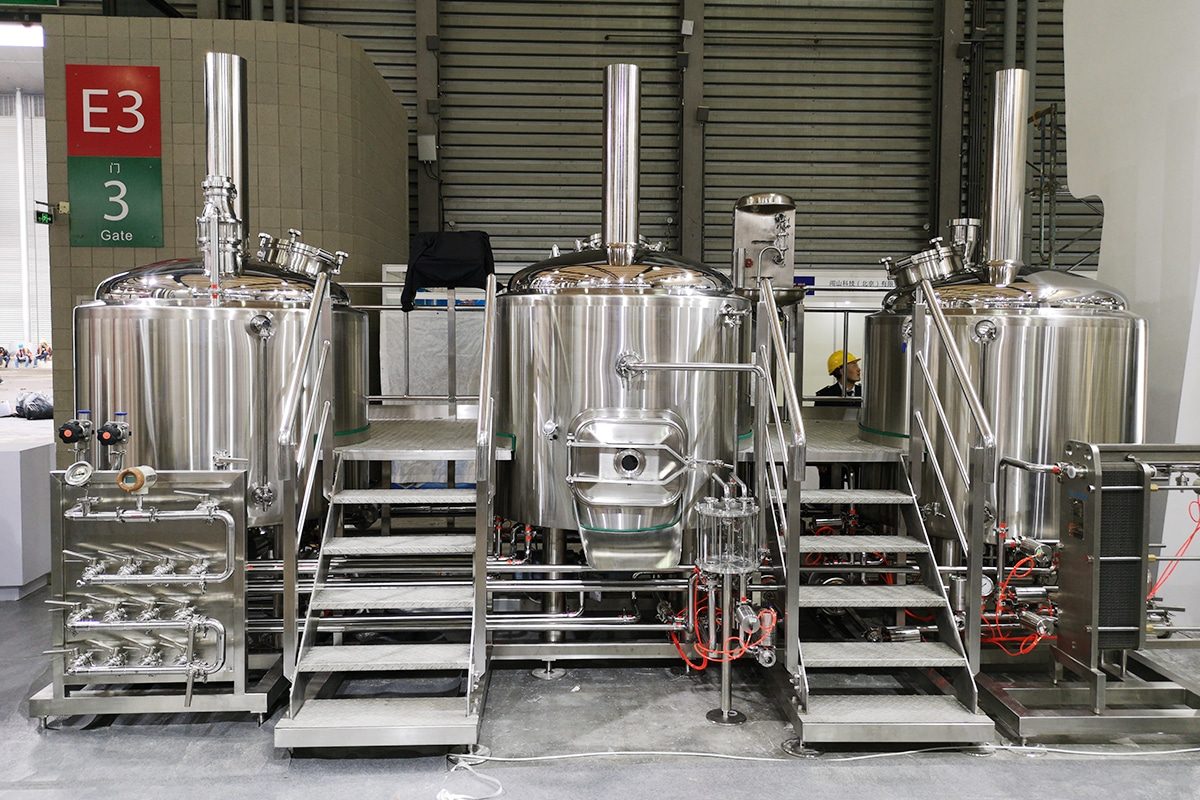
Managing Logistics and Shipping
Shipping Options
Evaluate various shipping options and transportation modes to determine the most suitable method for transporting brewing equipment from China to your destination. Consider factors such as cost, transit time, cargo volume, and shipping flexibility when selecting shipping options.
- Sea Freight: Choose sea freight for large-volume shipments of brewing equipment that are not time-sensitive. Sea freight offers cost-effective transportation for bulky or heavy items and allows for shipping consolidation to optimize container space and reduce shipping costs.
- Air Freight: Opt for air freight when expedited delivery is required or when shipping smaller quantities of brewing equipment with tight delivery deadlines. Air freight provides fast transit times, reliable scheduling, and real-time tracking capabilities, albeit at a higher cost compared to sea freight.
- Rail Freight: Explore rail freight as an alternative transportation mode for shipping brewing equipment between China and neighboring countries or regions with well-developed rail networks. Rail freight offers a balance between cost-effectiveness and transit time, particularly for shipments traveling overland across Eurasia.
- Multimodal Transport: Consider multimodal transport solutions that combine multiple transportation modes, such as sea-air or rail-sea, to optimize transit routes, minimize costs, and mitigate supply chain risks. Utilize freight forwarding services or logistics providers experienced in multimodal transport to coordinate seamless transitions between different modes of transportation.
Incoterms and Responsibilities
Clarify Incoterms (International Commercial Terms) and respective responsibilities between buyers and sellers when negotiating purchase agreements with Chinese suppliers. Define terms of sale, ownership transfer points, and allocation of risks and responsibilities related to transportation, insurance, and customs clearance.
- Ex-Works (EXW): Under EXW Incoterms, the buyer assumes responsibility for arranging transportation, insurance, and customs clearance from the seller’s premises in China. Buyers are responsible for all associated costs and risks from the point of origin, including loading, transportation, export documentation, and import duties.
- FOB (Free On Board): With FOB Incoterms, the seller is responsible for delivering the goods to the named port of shipment in China and loading them onto the vessel. Once loaded, ownership and risk transfer to the buyer, who assumes responsibility for transportation, insurance, and import clearance at the destination port.
- CIF (Cost, Insurance, and Freight): CIF Incoterms require the seller to arrange transportation and insurance to deliver the goods to the named port of destination in the buyer’s country. The seller bears the cost and risk of transportation to the destination port, including freight charges and marine insurance premiums.
- DDP (Delivered Duty Paid): Under DDP Incoterms, the seller is responsible for delivering the goods to the buyer’s designated location in their country, including transportation, insurance, customs clearance, and payment of import duties and taxes. The seller assumes full responsibility and risk until the goods are delivered to the buyer.
Freight Forwarders and Customs Brokers
Partner with experienced freight forwarders and customs brokers to facilitate international shipping, customs clearance, and logistics coordination for brewing equipment imports from China. Engage reputable service providers with expertise in international trade regulations, transportation logistics, and customs procedures.
- Freight Forwarding Services: Work with freight forwarders to manage transportation logistics, book shipping arrangements, and coordinate cargo movement from the supplier’s location in China to the destination port or final delivery address. Utilize freight forwarders to optimize shipping routes, consolidate shipments, and navigate regulatory requirements.
- Customs Brokerage Support: Enlist the services of customs brokers to assist with customs clearance procedures, import documentation, and compliance with import regulations and tariffs. Customs brokers facilitate the smooth clearance of brewing equipment through customs authorities and ensure adherence to import requirements and regulatory standards.
Packaging and Handling
Ensure proper packaging and handling of brewing equipment to protect against damage, minimize transit risks, and comply with shipping regulations and packaging standards. Collaborate with suppliers and logistics partners to implement appropriate packaging solutions tailored to the size, weight, and fragility of the equipment.
- Secure Packaging: Use sturdy and protective packaging materials such as crates, pallets, corrugated boxes, and foam padding to safeguard brewing equipment during transit. Securely fasten components, cushion fragile parts, and label packages with handling instructions, product identifiers, and shipping markings for easy identification and handling.
- Hazardous Materials Handling: Comply with regulations governing the transportation of hazardous materials, chemicals, or components used in brewing equipment. Ensure proper labeling, documentation, and handling procedures for hazardous substances to mitigate safety risks and regulatory compliance issues during shipping.
Tracking and Monitoring
Implement tracking and monitoring mechanisms to monitor the progress of brewing equipment shipments, track cargo movements, and proactively address any issues or delays during transit. Leverage technology-enabled tracking solutions and communication channels to stay informed and maintain visibility throughout the shipping process.
- Shipment Tracking: Use tracking and tracing tools provided by freight forwarders, carriers, or shipping lines to monitor the real-time status and location of brewing equipment shipments. Track shipments from origin to destination, receive status updates and proactively manage logistics challenges or disruptions.
- Communication Channels: Establish open communication channels with suppliers, freight forwarders, and customs brokers to facilitate information exchange, address queries, and resolve issues promptly. Maintain regular communication via email, phone calls, or online platforms to stay updated on shipment progress and coordinate logistics activities effectively.
- Exception Management: Monitor shipments for any exceptions, delays, or unforeseen events that may impact delivery schedules or shipment integrity. Implement contingency plans, alternative routing options, or expedited shipping arrangements to mitigate risks and minimize disruptions to brewing equipment procurement timelines.
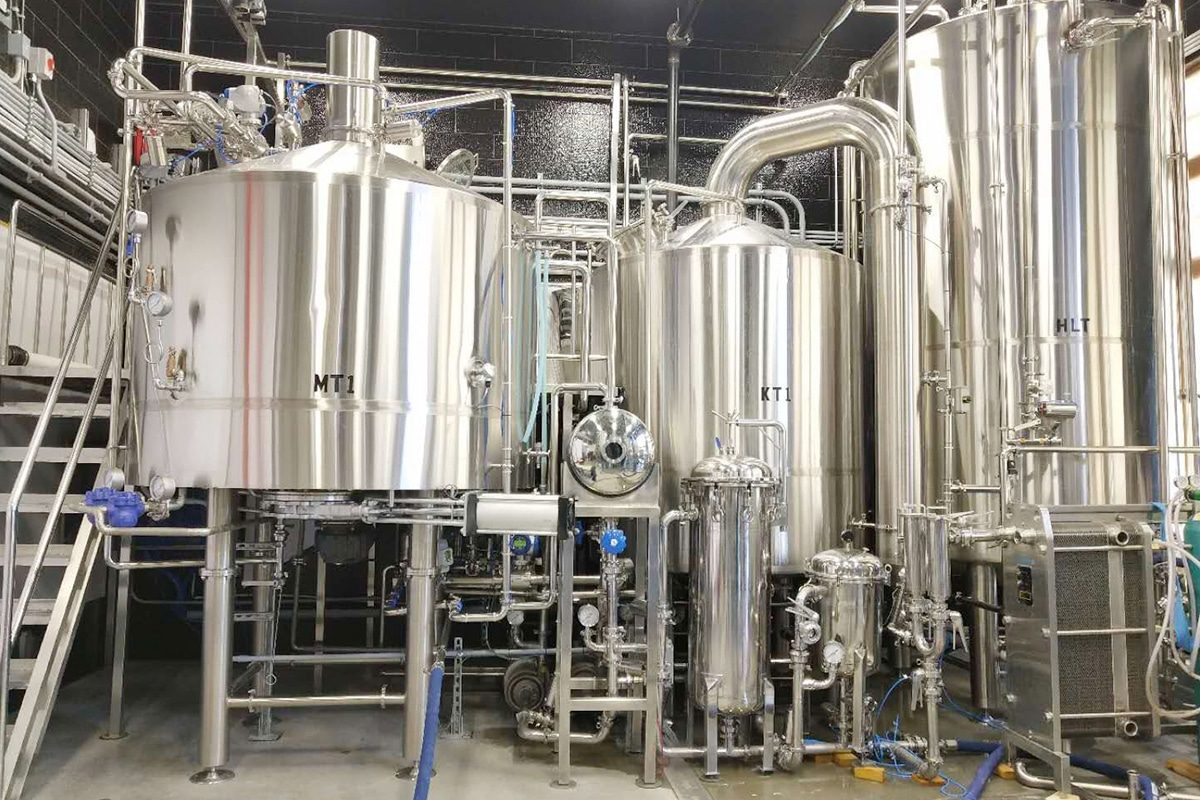
Implementing Quality Control and Acceptance Procedures
Receiving Inspection
Conduct thorough receiving inspections upon delivery of brewing equipment from China to verify the condition, completeness, and conformity of the received goods. Inspect packaging integrity, documentation accuracy, and physical condition of equipment components to identify any discrepancies, damages, or deviations from specifications.
- Documentation Review: Review shipping documents, packing lists, invoices, and certificates of origin to ensure accuracy, completeness, and compliance with contractual requirements. Verify that all necessary documentation, including import/export permits, compliance certificates, and inspection reports, is included and properly prepared.
- Visual Inspection: Perform visual inspections of brewing equipment components, assemblies, and packaging for signs of damage, defects, or shipping-related issues. Check for dents, scratches, rust, or other visible abnormalities that may affect equipment performance or safety.
- Component Verification: Compare received equipment components, parts, and accessories against the packing list or bill of materials to confirm completeness and accuracy. Check for missing items, incorrect quantities, or substitutions that may impact equipment functionality or assembly.
- Dimensional Inspection: Measure critical dimensions, dimensions, and tolerances of brewing equipment components using calibrated measuring instruments to verify conformity with technical specifications and engineering drawings. Ensure alignment, fit, and compatibility of components for proper assembly and functionality.
Functional Testing
Perform comprehensive functional testing of brewing equipment to assess operational performance, reliability, and compliance with specified requirements. Conduct functional tests on individual components, subsystems, and integrated systems to validate functionality under simulated operating conditions.
- Operational Checks: Test key functionalities, controls, and operational features of brewing equipment, such as heating elements, temperature controls, pumps, valves, and sensors. Verify proper operation, responsiveness, and accuracy of equipment functions according to design specifications.
- Performance Testing: Subject brewing equipment to performance tests, process simulations, or trial runs to evaluate performance characteristics, throughput capacity, and efficiency. Measure brewing parameters such as temperature stability, flow rates, pressure levels, and production yields to validate equipment performance against expected benchmarks.
- Safety Tests: Conduct safety tests and risk assessments to identify and mitigate potential hazards, safety concerns, or ergonomic issues associated with brewing equipment operations. Verify compliance with safety standards, regulatory requirements, and industry best practices to ensure a safe working environment for brewery personnel.
Compliance Verification
Verify compliance with regulatory standards, industry specifications, and contractual requirements through rigorous inspection, testing, and documentation review. Ensure that brewing equipment meets applicable safety, quality, and performance standards before acceptance and deployment in brewery operations.
- Regulatory Compliance: Confirm adherence to regulatory requirements governing brewing equipment, including food safety regulations, electrical safety standards, pressure vessel codes, and environmental regulations. Verify compliance with relevant authorities, certification bodies, and industry associations to ensure legal and regulatory compliance.
- Standards Conformance: Validate conformance with industry standards, technical specifications, and quality assurance guidelines applicable to brewing equipment design, manufacturing, and performance. Verify compliance with international standards such as ISO (International Organization for Standardization), ASTM (American Society for Testing and Materials), and ASME (American Society of Mechanical Engineers).
- Contractual Requirements: Ensure alignment with contractual requirements, specifications, and acceptance criteria established in the purchase agreement or contract with the Chinese supplier. Verify that brewing equipment meets agreed-upon specifications, customization options, and performance guarantees outlined in the purchase contract.
Acceptance Criteria
Define clear acceptance criteria and quality standards for brewing equipment based on technical specifications, performance requirements, and regulatory compliance criteria. Establish measurable criteria, thresholds, and benchmarks to evaluate equipment quality, functionality, and suitability for brewery operations.
- Performance Specifications: Specify performance parameters, tolerances, and acceptance limits for key brewing equipment functionalities, such as temperature control, pressure regulation, throughput capacity, and product quality attributes. Define acceptable ranges or deviations from target values based on operational requirements and brewing standards.
- Quality Metrics: Establish quality metrics and inspection criteria for assessing brewing equipment quality, reliability, and durability. Define acceptance criteria for visual defects, dimensional deviations, material imperfections, and surface finishes to ensure consistency and uniformity in equipment appearance and performance.
- Compliance Requirements: Outline compliance requirements and regulatory standards that brewing equipment must meet to achieve acceptance and approval for use in brewery operations. Verify compliance with applicable regulations, certifications, and industry standards governing food safety, product quality, and workplace safety.
Acceptance Sign-Off
Obtain formal acceptance sign-off and approval from designated stakeholders, quality assurance personnel, and brewery management once brewing equipment successfully meets acceptance criteria and quality standards. Document acceptance decisions, test results, and compliance findings for record-keeping and audit purposes.
- Acceptance Review: Conduct a final review of inspection reports, test results, and compliance documentation to verify alignment with acceptance criteria and quality standards. Confirm that all requirements and specifications have been met satisfactorily before proceeding with acceptance sign-off.
- Stakeholder Approval: Seek approval from designated stakeholders, project managers, quality assurance representatives, and brewery management to formally accept brewing equipment for deployment in brewery operations. Obtain signatures or endorsements on acceptance documents to signify agreement and acknowledgment of equipment readiness.
- Acceptance Certificate: Issue an acceptance certificate or formal acceptance documentation to confirm the successful completion of quality control procedures and compliance verification. Include details such as equipment specifications, test results, acceptance criteria, and signatories to provide a comprehensive record of acceptance and approval.
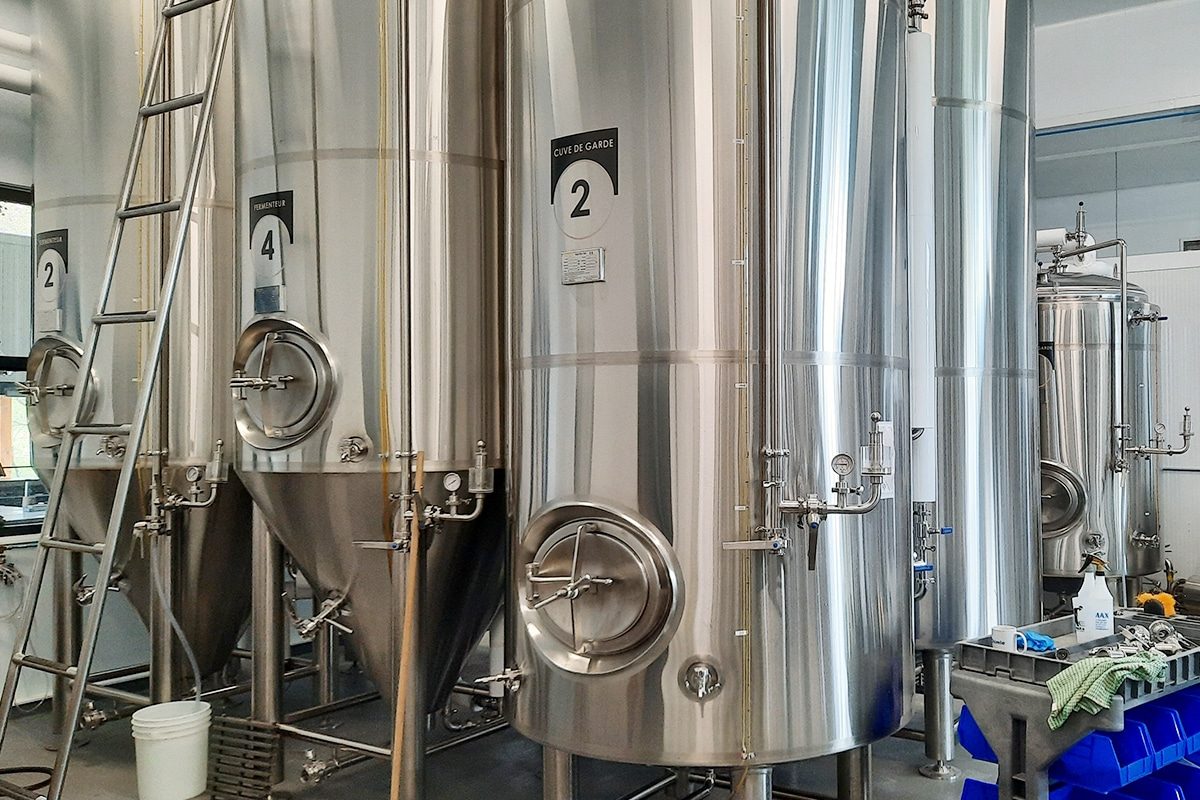
Establishing Long-Term Relationships with Suppliers
Open Communication
Maintain open and transparent communication channels with Chinese suppliers to foster trust, collaboration, and alignment of goals and expectations. Establish regular communication cadences, channels, and points of contact to facilitate information exchange, feedback sharing, and issue resolution.
- Regular Updates: Schedule periodic meetings, conference calls, or video conferences with suppliers to discuss project progress, status updates, and upcoming requirements. Share relevant information, updates, and feedback to ensure both parties are informed and engaged in the partnership.
- Feedback Mechanisms: Provide constructive feedback to suppliers on product quality, delivery performance, communication effectiveness, and customer service experiences. Encourage suppliers to solicit feedback from brewery personnel, end-users, and stakeholders to identify areas for improvement and address concerns proactively.
- Transparency: Maintain transparency in business dealings, pricing discussions, contract negotiations, and decision-making processes to build trust and confidence with suppliers. Communicate openly about business objectives, expectations, and challenges to facilitate collaborative problem-solving and resolution.
Supplier Performance Reviews
Conduct regular supplier performance reviews to evaluate supplier performance, track key performance indicators (KPIs), and identify opportunities for improvement or optimization. Establish performance metrics, benchmarks, and evaluation criteria to assess supplier performance objectively and consistently.
- Performance Metrics: Define performance metrics and KPIs relevant to brewing equipment procurement, such as on-time delivery performance, quality conformity rates, responsiveness to inquiries, and resolution of quality issues or complaints. Use quantitative and qualitative measures to assess supplier performance comprehensively.
- Performance Scorecards: Develop supplier performance scorecards or dashboards to track and monitor performance metrics over time. Compare actual performance against target benchmarks, identify trends, and analyze root causes of performance deviations to drive corrective actions and continuous improvement initiatives.
- Performance Feedback: Provide timely and constructive feedback to suppliers based on performance reviews, highlighting areas of strength, areas for improvement, and actionable recommendations for enhancement. Collaborate with suppliers to develop action plans, set improvement targets, and monitor progress towards performance goals.
Collaborative Problem-Solving
Engage in collaborative problem-solving and resolution of issues with suppliers to address challenges, overcome obstacles, and drive continuous improvement in product quality and service delivery. Foster a culture of partnership, cooperation, and shared accountability for achieving common goals.
- Root Cause Analysis: Work collaboratively with suppliers to conduct root cause analysis of quality issues, delivery delays, or other performance challenges affecting brewing equipment procurement. Identify underlying causes, contributing factors, and systemic issues that require corrective actions or process improvements.
- Corrective Actions: Implement corrective actions, preventive measures, and process improvements in collaboration with suppliers to address identified issues and prevent recurrence. Establish clear responsibilities, timelines, and follow-up mechanisms to track implementation progress and verify effectiveness.
- Continuous Improvement: Promote a culture of continuous improvement and innovation within the supplier relationship by encouraging proactive identification of opportunities for optimization, enhancement, and value creation. Collaborate on initiatives such as product innovation, process optimization, cost reduction, and quality enhancement to drive mutual benefits.
Supplier Development Programs
Implement supplier development programs and initiatives to support the growth, capability-building, and sustainability of Chinese suppliers in the brewing equipment supply chain. Invest in supplier capacity building, skills development, and performance enhancement to strengthen supplier capabilities and competitiveness.
- Training and Education: Provide training, technical assistance, and knowledge transfer opportunities to Chinese suppliers to enhance their understanding of brewing industry requirements, quality standards, and best practices. Offer workshops, seminars, or online training resources on topics such as quality management, manufacturing processes, and regulatory compliance.
- Process Optimization: Collaborate with suppliers to identify opportunities for process optimization, efficiency improvements, and cost reduction initiatives within the manufacturing and supply chain operations. Implement lean manufacturing principles, Six Sigma methodologies, or value engineering techniques to streamline processes and eliminate waste.
- Supplier Diversity: Promote supplier diversity and inclusion initiatives by engaging with a diverse pool of Chinese suppliers representing different geographical regions, company sizes, and industry specializations. Encourage participation from minority-owned businesses, women-owned enterprises, and small and medium-sized enterprises (SMEs) to foster diversity and resilience in the supply chain.
Relationship Building Activities
Participate in relationship-building activities and engagement initiatives to strengthen ties, build rapport, and foster goodwill with Chinese suppliers beyond transactional interactions. Cultivate a sense of partnership, camaraderie, and mutual respect through collaborative initiatives and shared experiences.
- Site Visits and Tours: Arrange site visits, factory tours, or in-person meetings with Chinese suppliers to develop personal connections, gain insights into their operations, and build rapport with key stakeholders. Foster face-to-face interactions, networking opportunities, and relationship-building activities to enhance trust and understanding.
- Social Responsibility: Collaborate with suppliers on social responsibility initiatives, community engagement projects, or sustainability programs that align with shared values and corporate social responsibility (CSR) objectives. Support initiatives such as environmental conservation, worker welfare, or philanthropic activities to demonstrate commitment to ethical business practices and social impact.
- Joint Events and Celebrations: Organize joint events, celebrations, or milestone acknowledgments to commemorate achievements, successes, and milestones in the supplier relationship. Celebrate shared accomplishments, project milestones, or business anniversaries as opportunities to strengthen bonds and express appreciation for collaboration.
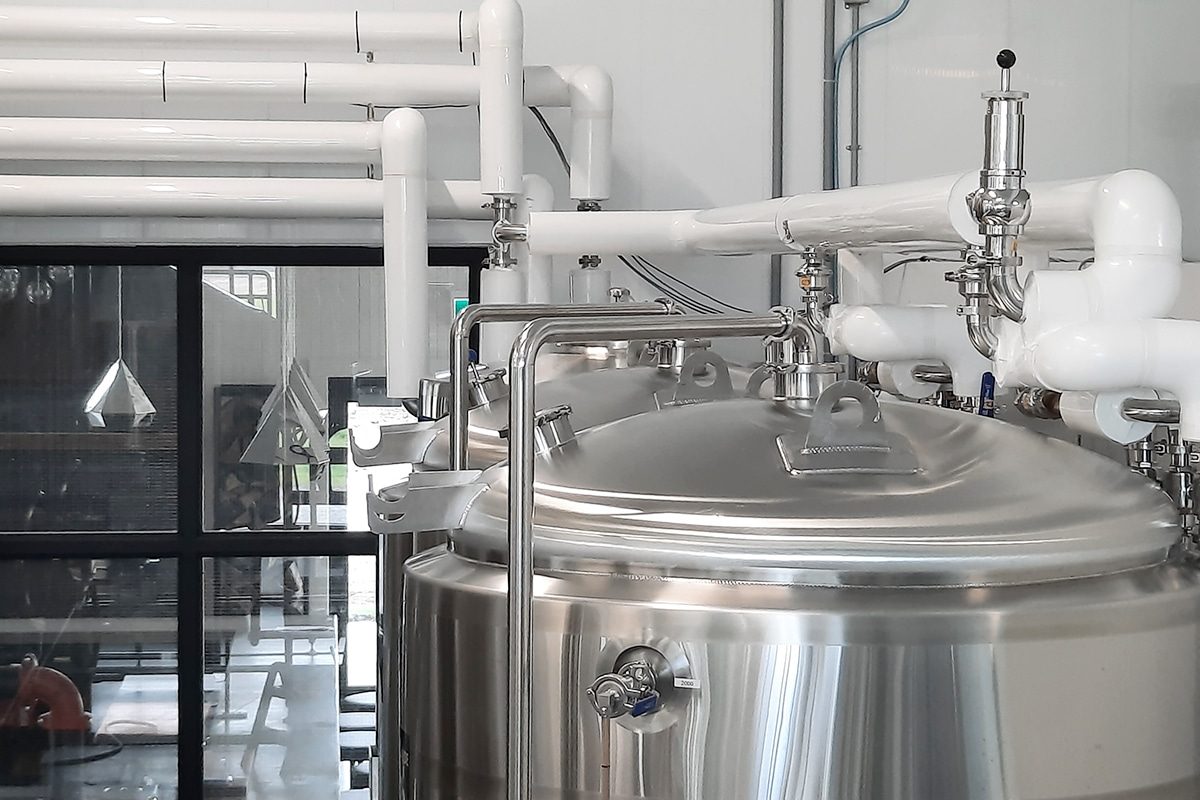
Summarize
